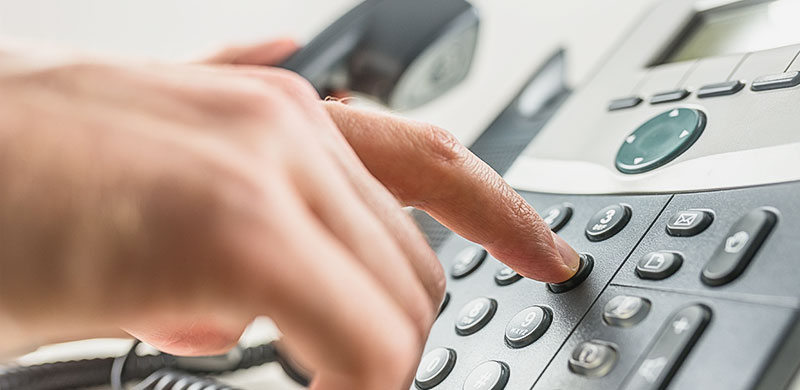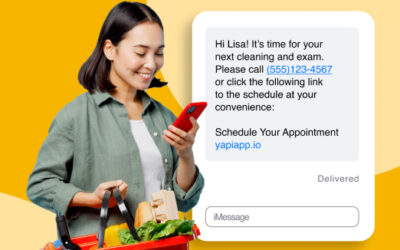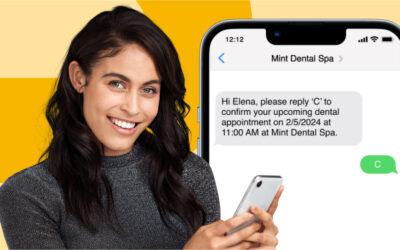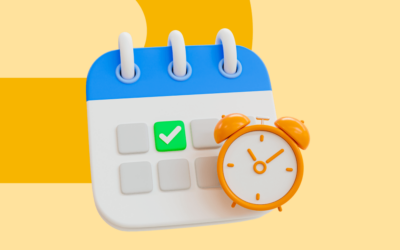
What do you do when your automated reminders go unanswered? Has your office invested in automation software to make it as easy as possible for patients to confirm appointments? Yet you still have patients that just don’t respond to automated confirmation messages?
This is not completely out of your control. While it is true that you can’t make a person respond, there are things you can do when the patient is still at your office to prevent unconfirmed appointments.
Why Does This Happen?
There are 5 main reasons why your automated messages can be ignored.
Your patients are just too busy.
They are continually multi-tasking and in all the hustle and bustle, simply overlook your messages. Those with kids also know that messages can easily be missed when they play with our phones.
Communication overload.
There are so many kinds of messages that interrupt our lives. Between texts, tweets, emails, Facebook notifications, LinkedIn invites and dozens of messages from your practice and other healthcare providers, it’s easy for a single message to get lost in the shuffle.
Your patients don’t realize they need to respond.
The patient may see the message and make a mental note, but not realize that an actual written response is required to confirm. They may assume that as long as they don’t decline the appointment, you know they’ll be there. This same patient might get annoyed as they continuously receive reminders for an appointment they are planning to go to.
They forget.
Of course, you will have patients who forget to respond even if they know they are supposed to. This often happens when your text message arrives at an inopportune time; maybe when they are driving or in a meeting. It could happen when they are not ready to respond right away. They might plan on doing it later, after they check their schedule or talk to their spouse, but get busy and forget.
They are on the fence about keeping their appointment.
Nervous patients looking for an “out” may not respond. Patients with unresolved financial concerns or those with questions about their treatment plan might put off responding because they are still deciding whether or not to keep the appointment.
This is why a phone call should always be the next step with unconfirmed appointments. Since picking up the phone is time-consuming, there are things you can do help prevent these issues in the first place.
Tell Your Patients What is Expected of Them
Make it clear to patients when you schedule them exactly what should be anticipated. The automated instructions seem self-explanatory but a lack of simplicity is often not the issue. When rushing about their daily lives, people won’t always read through the full instructions. Even a short, two-sentence text can be glanced over. They will make a mental note of the date and time and consider it done.
For best results, practices need to verbalize the process when the patient is at their office. Tell them that when it is time for their next appointment, they will get a confirmation message via text and email.
Explain how they should reply. Suggest they add your email address to their contacts so that it does not go to spam. With YAPI, clarify that as soon as a patient replies with a “C” to confirm, the reminders will stop. They will receive a final reminder two hours before the appointment.
You might say:
“Erik, when it comes time for your next appointment you will receive email and text reminders. Make sure our email is in your contacts so that you receive it. Then, all you have to do is to click “Confirm” button or type “C” to respond to the text message. This lets us know that you received the message so that we can be ready for you. We will see you next time!”
Let Your Patients Know You Are Just a Text Away
Many patients may not realize that while text messages are automated, they can respond and immediately talk to someone at your practice. Encourage them to engage by handing out cards that invite them to text the practice. Put your text number on your business cards. You can also advertise the availability of text messaging in your marketing communications, statements, on-hold message and website. You can include a message such as this: For your convenience, any request can now be sent via text. We’ll be happy to assist.
If your office doesn’t have a mobile phone for use, there are text to landline services such as ZipWhip that allow you to send and receive texts through your computer. Your patients will appreciate the convenience and be much more likely to respond when they know they are communicating with a human, not a computer.
Cater to Patient Communication Preferences
Ask patients about their communication preference. They will appreciate it and be more likely to respond. A patient may know they are terrible at checking their email, but always check and respond to their text messages. This would be good for you to know and note on their file! Some will say that either method is fine, but there are people who will specifically request one way or another.
It can be a good idea to create an instructional card to display in the reception room or at the checkout counter. It can say something as simple as: Help us send appointment confirmations YOUR way! How would you like to receive your appointment reminders? Before you leave, tell us about your communication preferences.
Use the communication method of choice for your patients. YAPI allows you to make notes to specify any requests. Opt them out of communication types they do not want in advance.
Streamline Your Patient Communications
More is not always better. Excessive communication may become intrusive, annoying and cause patients to tune you out. Find the right balance that lets you remind patients about their appointments without adding to the communication overload. Also, consider the timing of your messages to avoid sending messages too early in the morning or interrupting their dinner and family time. The best time to send a text message is when the practice is open and can respond to any last minute changes and requests.
Take Control of Your Schedule!
Possibly even more frustrating than patients who don’t confirm their appointments are those who do confirm appointments and don’t show up. The actions of your dental team can either increase cancellations or prevent them. It’s important not to make appointments without first having a firm financial arrangement with the patient. Be sure to address any questions they may have about their treatment to let them know what to expect and manage their fears. It might be a good idea to opt-out patients who routinely break appointments.
To better manage your schedule to maintain a fully booked calendar, check out our ebook, The Science of Appointment Control. Written by award-winning practice management consultant Sandy Pardue, it is your remedy for continuously broken appointments.



